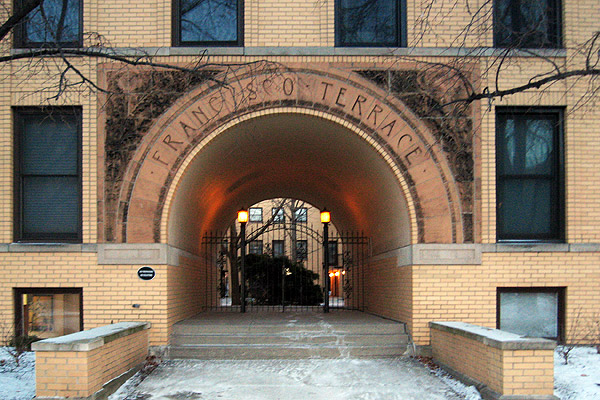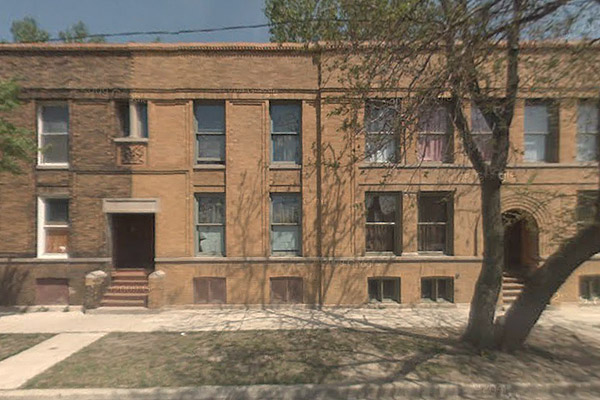The Reader's Mick Dumke has an excellent five-part piece on the murder of Dantrell Davis and its role in the end of high-rise public housing in Chicago that's well worth your time—it's a compelling history of a critical juncture in housing and public policy, and the beginning of the plan for transformation, with implications for other aspects of city life, like crime. Davis's murder meant the end of the "projects"; not public housing, or subsidized housing, but dense, large-scale public housing:
"That's when this whole concept of mixed-income housing was signed off on," Lane says. "The purpose of it was to tear down the high-rise public housing."
[snip]
In fact, over the next 15 years, housing authorities across the country began dismantling their so-called vertical ghettos in favor of row houses and smaller multi-unit buildings that might attract working-class and professional families. In most cases, they moved toward getting out of the landlord business altogether.
In that sense, subsidized housing is returning to how it first began in Chicago, at the hands of developer Edward Waller and 28-year-old architect Frank Lloyd Wright, shortly after the latter was kicked to the curb by Adler & Sullivan. Like the more famous Julius Rosenwald and his much larger Rosenwald Apartments, Waller intended to build "subsidized" housing by taking a small, three-percent profit to keep costs down, and collaborated with Wright on two nearby projects: the Francisco Terrace apartments and the Waller Apartments.
The former is considered a small masterpiece, despite Wright's youth and limited budget, framing his former employers' more elaborate sense of style with his emerging approach:
Francisco Terrace was a statement of pure, utilitarian simplicity whose primary ornament was the Sullivanesque terra cotta around the arched entrance to the courtyard and on the corner stair towers. Wright's use of integral ornament, exemplified in the careful manipulation of the masonry materials, gave this low-cost housing a sense of style and dignity without extravagance.
This exterior shot of the Francisco Apartments shows how the light, graceful Sullivanesque entry fits into the solid, muscular apartment design; inside was an intimate courtyard. But the building slowly declined, Devereaux Bowly Jr. writes in The Poorhouse, pulled apart physically and legally: "Waller died in 1931, and shortly thereafter the neighborhood changed from white to black occupancy. The building and the land were subdivided and sold off as twenty-two separate parcels, each containing two apartments, one on top of the other…. The Depression, World War II, a lack of unified ownership, and the general decline of the West Side all took their toll on the building. By 1971, it was very dilapidated, only partially occupied, and the subject of a demolition suit brought by the City of Chicago."
In 1974 it came down, though not before Benjamin Weese (architect, brother of Harry Weese) and John Baird (of Baird & Warner fame) saved the terra cotta. They essentially rebuilt the Francisco Apartments a couple miles west in Oak Park (the design is similar, but the brick is different), where the original decoration remains:

The Waller Apartments (2800 block of West Walnut Street in East Garfield Park), though somewhat less distinguished than Francisco Terrace, actually survived; like the Francisco, they're a combination of Wright's training and his emerging style, done on a tight budget:
One of the five original buildings no longer exists; a 1968 fire destroyed it, punching a gap-toothed hole in the row of brick buildings on the sun-dappled, north side of the street. Some of the remaining four structures, with neatly-arranged curtains in their windows, look as prim and proper as any middle-class home. Others are marred by graffiti and have boarded-up windows.
Peer beneath the grime, though, and Wright`s inventive genius is apparent in such details as thin brick mortar joints that emphasize the buildings' horizontality, a trick the architect would use on his Prairie School houses. There also are panels of terra cotta ornament, designed in a flower-like pattern that reveals the influence of Wright's mentor, Louis Sullivan.
In 1995, 100 years after the Waller Apartments went up, the Landmarks Preservation Council rebuilt the dilapidated units, which had stayed vacant for years. They still exist, though the now-landmarked building still bears a facade of partial neglect—discoloration literally divides the complex.

And over a century later, it remains affordable; a rehabbed unit—two stories, three bedrooms—in the complex sold for $54k earlier this year.
Photographs: Wikimedia Commons, Google Street View


